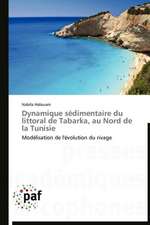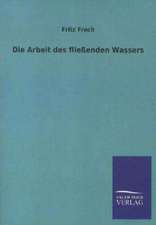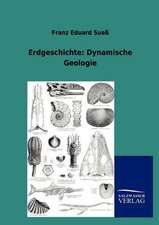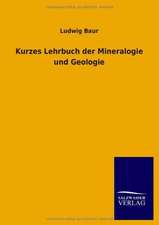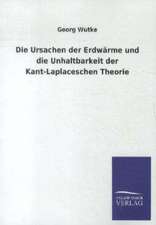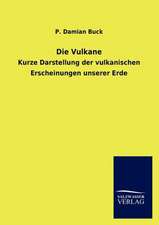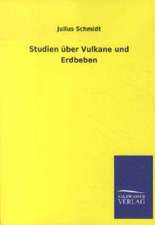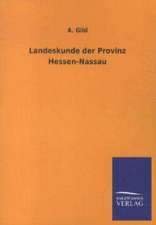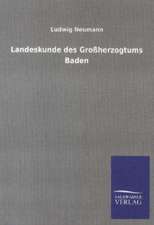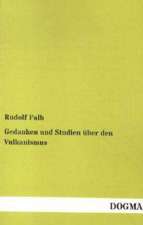The Geotourism Industry in the 21st Century: The Origin, Principles, and Futuristic Approach
Editat de Bahram Nekouie Sadryen Limba Engleză Hardback – 2 noi 2020
| Toate formatele și edițiile | Preț | Express |
|---|---|---|
| Paperback (1) | 501.20 lei 6-8 săpt. | |
| Apple Academic Press Inc. – iun 2022 | 501.20 lei 6-8 săpt. | |
| Hardback (1) | 800.99 lei 6-8 săpt. | |
| Apple Academic Press Inc. – 2 noi 2020 | 800.99 lei 6-8 săpt. |
Preț: 800.99 lei
Preț vechi: 1066.07 lei
-25% Nou
Puncte Express: 1201
Preț estimativ în valută:
153.27€ • 160.45$ • 126.82£
153.27€ • 160.45$ • 126.82£
Carte tipărită la comandă
Livrare economică 05-19 aprilie
Preluare comenzi: 021 569.72.76
Specificații
ISBN-13: 9781771888264
ISBN-10: 1771888261
Pagini: 596
Ilustrații: 29 Line drawings, color; 111 Line drawings, black and white; 11 Tables, black and white; 29 Illustrations, color; 111 Illustrations, black and white
Dimensiuni: 156 x 234 mm
Greutate: 1.26 kg
Ediția:1
Editura: Apple Academic Press Inc.
Colecția Apple Academic Press
ISBN-10: 1771888261
Pagini: 596
Ilustrații: 29 Line drawings, color; 111 Line drawings, black and white; 11 Tables, black and white; 29 Illustrations, color; 111 Illustrations, black and white
Dimensiuni: 156 x 234 mm
Greutate: 1.26 kg
Ediția:1
Editura: Apple Academic Press Inc.
Colecția Apple Academic Press
Public țintă
Academic and PostgraduateNotă biografică
Bahram Nekouie Sadry, PhD, is an Adjunct Senior Lecturer and a Geotourism Consultant. Dr. Sadry conducts research in the fields of geotourism, ecotourism, and wildlife tourism and heritage interpretation. He has published several books and textbooks on geotourism and has undertaken geotourism consultancy projects for the private sector. He is also an education consultant and a curriculum developer on tourism and geotourism in higher education and has conducted geo-tour guide training courses for his national government. Dr. Sadry is deeply involved in the development of geotourism and is a passionate advocate for the creation of national geoparks and UNESCO Global Geoparks around the world.
Cuprins
Part 1: Geotourism Concepts In the 21st Century 1. The Scope and Nature of Geotourism in the 21st Century 2. Historical Viewpoints on the Geotourism Concept in the 21st Century 3. Urban Geotourism in Poland 4. Mining Heritage as Geotourism Attractions in Brazil Part 2: Geo-Assessments: Geoheritage Assessments for Geotourism 5. Geomorphosites: Aesthetic Landscape Features or Earth History Heritage? 6. Geoheritage and Geotourism in Albania 7. Establishing an Appropriate Methodology for the Management of Geological Heritage for Geotourism Development in the Azores UNESCO Global Geopark 8. “Simply the Best”?: The Search for the World’s Top Geotourism Destinations Part 3: Geo-Interpretation: Interpreting Geological And Mining Heritage 9. Interpreting Mining: A Case Study of a Coal Mine Exhibit 10. Geotrails 11. Interpreting Geological and Mining Heritage 12. Evolving Geological Interpretation Writings about a Well-Traveled Part of California, 1878–2016 13. Commercially Successful Books for Place-Based Geology: Roadside Geology Covers the U. S. Part 4: Geoparks And Community Developments: A Base for Geotourism Promotion 14. Community Engagement in Japanese Geoparks 15. The Role of Volunteer Management Programs in Geotourism Development 16. Geotourism and Proposed Geopark Projects in Turkey 17. Geotourism Development in Latin American UNESCO Global Geoparks: Brazil, Uruguay, Mexico, and Peru Part 5: Globalization and The Future Of Geological Attraction Destinations 18. Dinosaur Geotourism, a World Wide Growing Tourism Niche 19. Accessible Geotourism: Constraints and Implications 20. Space and Celestial Geotourism 21. Post-Mining Objects as Geotourist Attractions: Upper Silesian Coal Basin (Poland) 22. Geotourism vs. Mass Tourism: An Overview of the Langkawi UNESCO Global Geopark 23. The Future of Geotourism
Recenzii
“A timely contribution to studies on the status and practice of modern geotourism. . . . A sterling effort . . . As Bahram suggests in the book’s opening sentence, ‘Geotourism is an emerging and promising field for enjoyable and meaningful experiences in contemporary tourism.’ Similarly, this book is an enjoyable read and will add understanding and meaning to its readers’ own geotourism experiences!”
—From the Foreword by Thomas A. Hose, Honorary Research Associate, University of Bristol, United Kingdom; Visiting Professor, University of Novi Sad, Serbia
“An important book because it brings together the interpretive and management aspects of geotourism on a global scale. It reveals geotourism’s potential to popularize the fundamentals of geoscience and open up new pathways of sustainable economic development. Through his own chapters and those of the authors he has invited, Dr. Sadry has conveyed his global knowledge of the geopark movement and the art of geoscience interpretation. . . . This book will help geopark managers, geoscience educators, and all researchers and students of geotourism to use those ‘things themselves’ to instill bone-deep awareness of how the planet works. It will also help them use geotourism to create economic value for alleviating poverty, while protecting resources for future generations.”
—From the Foreword by William (Bill) Witherspoon, PhD, Retired geologist leading walks and talks; Co-author, Roadside Geology of Georgia
“A very useful addition to the ever-expanding collection of books on geotourism. With examples and contributors from around the world, the 23 chapters cover the expected topics well—but there are also unexpected topics too, which add greatly to the volume’s value. Just three examples: a chapter on Hateg Global Geopark’s highly skilled youth volunteers (yes, I have been guided by some of them), then there’s a chapter on mass tourism versus sustainable tourism in Langkawi Global Geopark, and finally thoughts on developing celestial tourism using the dark skies enjoyed by many geoparks. With increasing urbanization on our planet, the latter has to be a winner!”
—John Macadam / Earthwords, www.Earthwords.co.uk, also Honorary Associate at University of Exeter (UK)
—From the Foreword by Thomas A. Hose, Honorary Research Associate, University of Bristol, United Kingdom; Visiting Professor, University of Novi Sad, Serbia
“An important book because it brings together the interpretive and management aspects of geotourism on a global scale. It reveals geotourism’s potential to popularize the fundamentals of geoscience and open up new pathways of sustainable economic development. Through his own chapters and those of the authors he has invited, Dr. Sadry has conveyed his global knowledge of the geopark movement and the art of geoscience interpretation. . . . This book will help geopark managers, geoscience educators, and all researchers and students of geotourism to use those ‘things themselves’ to instill bone-deep awareness of how the planet works. It will also help them use geotourism to create economic value for alleviating poverty, while protecting resources for future generations.”
—From the Foreword by William (Bill) Witherspoon, PhD, Retired geologist leading walks and talks; Co-author, Roadside Geology of Georgia
“A very useful addition to the ever-expanding collection of books on geotourism. With examples and contributors from around the world, the 23 chapters cover the expected topics well—but there are also unexpected topics too, which add greatly to the volume’s value. Just three examples: a chapter on Hateg Global Geopark’s highly skilled youth volunteers (yes, I have been guided by some of them), then there’s a chapter on mass tourism versus sustainable tourism in Langkawi Global Geopark, and finally thoughts on developing celestial tourism using the dark skies enjoyed by many geoparks. With increasing urbanization on our planet, the latter has to be a winner!”
—John Macadam / Earthwords, www.Earthwords.co.uk, also Honorary Associate at University of Exeter (UK)
Descriere
The volume looks at the establishment and effective management of the over 130 UNESCO geoparks around the world and other travel and tourism destinations of interest for their significant historical, cultural, and frequently stunning physical attributes


